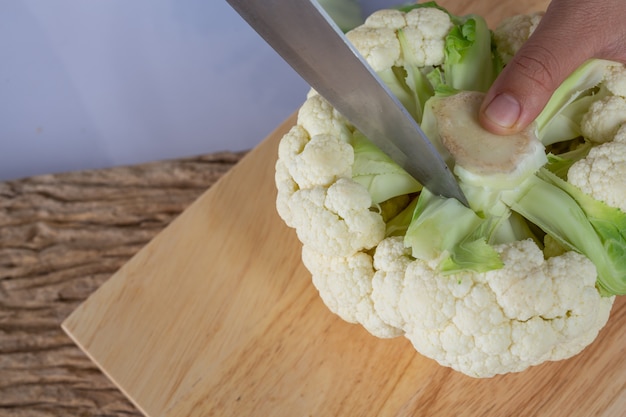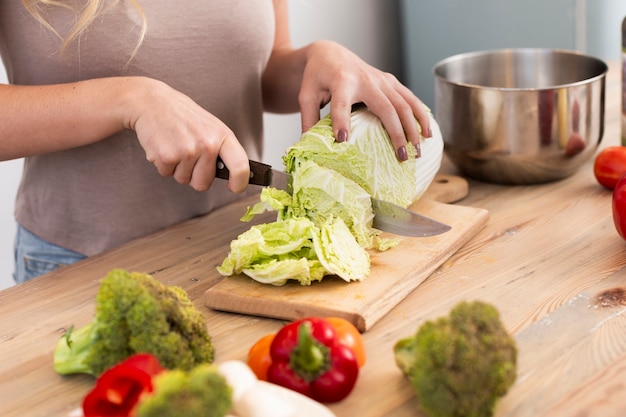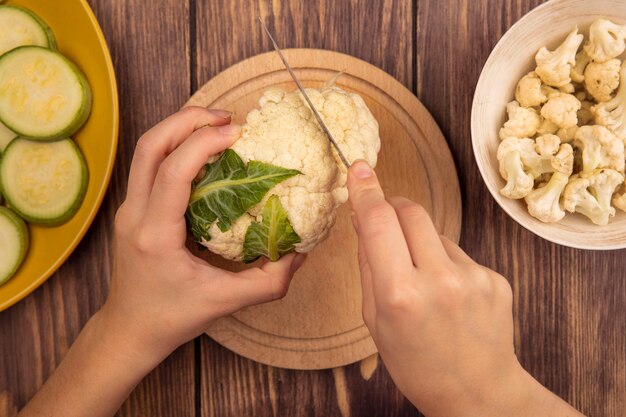Artichokes. Those spiky, mysterious globes that seem to intimidate even the most seasoned cooks. But let me tell you, don't be fooled by their prickly exterior! There's a treasure trove of deliciousness waiting to be unlocked inside, and I'm here to guide you on this culinary adventure. From choosing the perfect artichoke to whipping up some truly delicious dishes, I'll share my tips, techniques, and favourite recipes to help you master the art of artichoke cooking. Get ready to discover a world of flavour you never knew existed!
(Part 1) Choosing the Right Artichokes

The first step in any culinary journey is sourcing the right ingredients. When it comes to artichokes, you want to select specimens that are fresh, firm, and full of flavour. Think of it like choosing a ripe avocado – you want it to give a little when you press it but not be too squishy.
The Art of Artichoke Selection
Here's what to look for in a good artichoke:
- Tightly closed leaves: The leaves should be tightly closed and compact, indicating freshness. Avoid artichokes with open leaves, as they may be past their prime.
- Firm base: The base of the artichoke should feel firm and solid when you press on it. Avoid artichokes that feel mushy or have soft spots.
- Dark green or purple tips: The tips of the leaves should be a deep green or purple colour. If they're brown or yellowed, it's a sign the artichoke is not fresh.
- Heavy for its size: A good artichoke will be heavy for its size, indicating that it’s full of water and flavour.
- Fresh scent: A fresh artichoke will have a pleasant, earthy aroma. If it smells musty or off, it's best to avoid it.
Remember, a good artichoke is an investment, so take your time and choose wisely!
(Part 2) Preparing Artichokes: A Step-by-Step Guide

Now that you've got your perfect artichokes, it's time to get them ready for cooking. Don't worry, it's not as daunting as it looks! It's all about a bit of trimming and cleaning, and before you know it, you'll have beautiful, ready-to-cook artichokes.
Trimming the Spikes: A Necessary Step
Those prickly leaves may look intimidating, but with a few simple steps, you can tame them into culinary gems. Here's how to trim an artichoke:
- Cut off the top: Using a sharp knife or kitchen shears, cut off the top 1-2 inches of the artichoke, where the leaves are most pointed.
- Remove the tough outer leaves: Start from the bottom of the artichoke and snap off the tough outer leaves, working your way up until you reach the tender inner leaves. You'll feel a bit of resistance when you reach the tender ones.
- Trim the stem: Cut off the stem, leaving about an inch attached to the base. If you're planning to cook the stem, trim off any tough outer layers.
- Scoop out the choke: This is the fuzzy, inedible part in the center of the artichoke. Use a spoon to scoop it out, making sure to remove all of it.
- Protect from browning: To prevent the artichoke from browning, you can rub the cut surfaces with lemon juice or vinegar.
The Art of Steaming: Unlocking the Flavour
My preferred method for cooking artichokes is steaming. It's a gentle technique that allows the artichoke's natural flavours to shine through. It does require a bit of patience, but the results are well worth the wait.
Here's how to steam artichokes to perfection:
- Prepare the steamer: Fill a steamer basket with water and bring it to a boil.
- Add the artichokes: Place the prepared artichokes in the steamer basket and cover the pot.
- Steam to tenderness: Steam for 30-45 minutes, or until the leaves are tender when pierced with a fork. Don't worry if they don't all reach the same level, just make sure you've got plenty of water in the bottom of the pan. I usually top up the water as it evaporates.
- Check for readiness: The artichoke is ready when the leaves pull away from the center easily.
(Part 3) Deliciously Different: Exploring the World of Artichokes

Now that you've mastered the basics, let's talk about adding a bit of flair! You can really get creative with the flavours you add to your artichokes while cooking. Think of it as a blank canvas, ready for your artistic touch.
Flavour Combinations for Every Palate
Lemon is a classic and refreshing pairing, but you can also add herbs, garlic, or even spices like cumin or paprika for a bit of heat. It’s all about experimenting and finding the flavours that work for you. I like to add a bit of fresh thyme to the steaming water for a slightly more herbaceous flavour. Here are a few flavour combinations to get you started:
- Lemon and Herbs: A squeeze of lemon juice, a sprig of rosemary, and a few bay leaves add a bright, Mediterranean flair.
- Garlic and Parmesan: Place a few cloves of garlic and a sprinkle of parmesan cheese in the bottom of your steamer pot before adding the artichokes. It creates a rich and savoury flavour.
- Spicy: A pinch of red pepper flakes or a chopped chilli to the steaming water gives a kick of heat.
- Citrus and Ginger: For a more exotic twist, try adding orange zest and a knob of ginger to the steaming water.
(Part 4) Serving Up Your Artichokes: Elegant and Easy
Okay, your artichokes are cooked to perfection, now it's time to get them on the plate! Remember, presentation matters! A little effort can transform your simple artichoke into a culinary masterpiece.
The Art of Presentation: From Simple to Spectacular
Here are a few tips for serving your artichokes in style:
- Whole Artichoke: For a dramatic presentation, serve the artichoke whole. Place it on a platter and arrange the leaves around it, creating a beautiful, edible centerpiece.
- Individual Portions: If you're serving a crowd, it's easier to cut the artichoke into quarters or halves before serving. This allows everyone to enjoy a piece.
- Dip and Dunk: Serve your artichokes with a delicious dipping sauce. I love a simple mayonnaise-based sauce with lemon juice and herbs. You can also try a creamy garlic sauce, a spicy aioli, or even a tangy balsamic vinaigrette.
- Garnish with Style: A sprinkle of chopped parsley, a few lemon wedges, or some toasted pine nuts can add a touch of elegance to your artichoke presentation.
And remember, if you're serving artichokes as a main course, it's often a good idea to pair them with a simple side dish, like a salad, grilled vegetables, or a crusty bread.
(Part 5) Artfully Adaptable: Recipes for Every Occasion
Now, let's dive into some recipes! I've got a few classics up my sleeve, and some of my own creations that I think you'll love. We're going to cover some simple everyday dishes, plus some more adventurous options for when you're feeling a bit more fancy.
Simple and Satisfying: steamed artichokes with Lemon
This is the ultimate in simple artichoke dishes. It lets the artichoke shine, and the lemon adds a bright and refreshing touch.
Ingredients:
- 2 medium artichokes
- 1/2 lemon, cut into wedges
- Salt and pepper, to taste
- Fresh parsley, for garnish
Instructions:
- Prepare the artichokes as described above.
- Fill a steamer basket with water and bring to a boil.
- Place the artichokes in the steamer basket and cover the pot.
- Add the lemon wedges and a pinch of salt to the steaming water.
- Steam for 30-45 minutes, or until the leaves are tender.
- Remove the artichokes from the steamer and serve immediately.
- Garnish with parsley and season with pepper to taste.
A Touch of Fancy: roasted artichokes with Garlic and Herbs
This recipe takes the simple steamed artichoke and adds a bit of richness and depth of flavour. It's perfect for a special occasion or a dinner party.
Ingredients:
- 2 medium artichokes
- 2 cloves garlic, minced
- 1 tablespoon olive oil
- 1/4 cup chopped fresh herbs (such as parsley, rosemary, and thyme)
- Salt and pepper, to taste
- Lemon wedges, for serving
Instructions:
- Prepare the artichokes as described above.
- Preheat the oven to 375°F (190°C).
- In a bowl, combine the olive oil, garlic, herbs, salt, and pepper.
- Rub the artichoke mixture all over the artichokes.
- Place the artichokes in a baking dish and roast for 45-60 minutes, or until the leaves are tender.
- Serve immediately with lemon wedges.
Beyond the Basics: Artichokes in a Different Light
Ready to take your artichoke skills to the next level? I've got some creative recipes that are sure to impress.
Artichokes on the Grill
There's something about the smoky flavour of grilled artichokes that's absolutely irresistible. The grilling process adds a bit of char and a smoky aroma that elevates the artichoke's flavour to a whole new level.
I suggest using a gas grill for this recipe as it's easier to control the heat. But, if you're using a charcoal grill, just make sure the coals are nice and hot before grilling.
Ingredients:
- 2 medium artichokes
- 2 tablespoons olive oil
- 1 tablespoon lemon juice
- 1 teaspoon garlic powder
- 1/2 teaspoon dried oregano
- Salt and pepper, to taste
Instructions:
- Prepare the artichokes as described above.
- In a small bowl, combine the olive oil, lemon juice, garlic powder, oregano, salt, and pepper.
- Brush the artichoke mixture all over the artichokes.
- Heat the grill to medium-high heat.
- Place the artichokes on the grill, cut-side down, and cook for 15-20 minutes, or until the leaves are tender and lightly charred.
- Serve immediately.
Hearty and Delicious: Artichokes in a creamy pasta sauce
Artichokes add a beautiful texture and a subtle earthy flavour to pasta dishes. This recipe combines artichokes with a rich and creamy sauce that's simply divine. It's a dish that's both comforting and sophisticated.
Ingredients:
- 1 pound pasta, such as fettuccine or linguine
- 1 (14-ounce) can artichoke hearts, drained and chopped
- 1/2 cup heavy cream
- 1/4 cup grated parmesan cheese
- 2 cloves garlic, minced
- 1 tablespoon olive oil
- Salt and pepper, to taste
- Fresh basil, for garnish
Instructions:
- Cook the pasta according to the package directions.
- While the pasta is cooking, heat the olive oil in a large skillet over medium heat.
- Add the garlic and cook for 1 minute, or until fragrant.
- Stir in the artichoke hearts and cook for 5 minutes, or until heated through.
- Pour in the heavy cream and bring to a simmer.
- Reduce the heat to low and simmer for 5 minutes, or until the sauce has thickened slightly.
- Stir in the parmesan cheese and season with salt and pepper to taste.
- Drain the pasta and add it to the skillet with the sauce.
- Toss to coat and serve immediately, garnished with fresh basil.
(Part 6) A Culinary Treasure: More Than Just a Side Dish
Artichokes are so much more than just a side dish. They can be used in all sorts of dishes, from salads and pizzas to soups and risottos. So don't be afraid to get creative and experiment with this versatile vegetable.
Artichokes in Salads
Chopped artichoke hearts add a delightful crunch and earthy flavour to salads. They pair well with both simple vinaigrette dressings and creamy dressings.
Here are a few ideas for salads with artichoke hearts:
- Mediterranean Salad: Combine artichoke hearts with tomatoes, cucumbers, olives, feta cheese, and a tangy lemon vinaigrette.
- Grilled chicken salad: Add artichoke hearts to a salad with grilled chicken, avocado, and a creamy ranch dressing.
- Caesar Salad: Artichoke hearts provide a nice textural contrast to the creamy dressing and romaine lettuce in a Caesar salad.
Artichokes on Pizza
Artichoke hearts make a great topping for pizza, Adding a unique flavour and texture. Try them with a garlic and herb sauce, or with other Mediterranean flavours, such as sun-dried tomatoes, olives, and feta cheese.
Here are a few ideas for pizza toppings with artichoke hearts:
- White Pizza: Top a white pizza with artichoke hearts, mozzarella, garlic, and a sprinkle of herbs.
- Mediterranean Pizza: Combine artichoke hearts with olives, sun-dried tomatoes, feta cheese, and a drizzle of olive oil.
- Chicken and artichoke pizza: Add grilled chicken, artichoke hearts, a creamy sauce, and mozzarella for a delicious and satisfying pizza.
Artichokes in Soups and Risottos
Chopped artichoke hearts can add a touch of elegance to soups and risottos. They blend beautifully with creamy soups or with risottos that feature other earthy flavours, such as mushrooms and truffles.
Here are a few ideas for soups and risottos with artichoke hearts:
- Creamy Artichoke Soup: Blend artichoke hearts with potatoes, onions, and cream for a rich and comforting soup.
- Mushroom and artichoke risotto: Add artichoke hearts to a classic mushroom risotto for a more complex flavour.
- Truffle Risotto: Combine artichoke hearts with truffles, Parmesan cheese, and white wine for a luxurious and decadent risotto.
Artichokes as a Vegetarian Main Course
Artichokes can even be the star of the show in vegetarian dishes. Try filling them with a cheesy filling, or roasting them with herbs and spices for a delicious and satisfying meal.
Here are a few ideas for vegetarian main courses featuring artichokes:
- Stuffed Artichokes: Fill artichoke hearts with a mixture of bread crumbs, cheese, herbs, and vegetables. Bake until golden brown and bubbly.
- Roasted Artichokes with Lemon and Herbs: roast artichokes with lemon, garlic, and herbs for a simple and flavorful main course.
- Artichoke and chickpea curry: Combine artichoke hearts with chickpeas, spices, and coconut milk for a hearty and flavorful curry.
(Part 7) Preserving the Goodness: Storage and Freezing
So, you've bought a beautiful bunch of artichokes, but you're not ready to cook them all at once. What to do? Here's a bit of advice on storing and freezing your artichokes.
Storing fresh artichokes
Unprepared artichokes can be stored in the refrigerator for up to 5 days. Wrap them tightly in plastic wrap and store them in the crisper drawer.
Freezing Artichokes
You can also freeze artichokes for future use. To freeze artichokes, simply blanch them in boiling water for 2-3 minutes, then cool them in ice water. Drain the artichokes and pat them dry. Place them in freezer bags, removing as much air as possible before sealing. Frozen artichokes can be stored for up to 6 months.
Remember, frozen artichokes are best used in cooked dishes, as they can lose their texture when thawed.
(Part 8) Frequently Asked Questions
Now, let's address some of those frequently asked questions about artichokes.
FAQs
| Question | Answer |
|---|---|
| How do I know if an artichoke is cooked? | The leaves should be tender and pull away from the center easily. You can also test the artichoke by piercing the heart with a fork. It should go in easily. |
| What part of the artichoke can I eat? | You can eat the leaves, the heart, and the stem. The bottom part of the stem is the most tender. |
| How do I eat artichoke leaves? | Dip the leaves in a sauce or butter and scrape the tender part of the leaf with your teeth. |
| What happens if I eat the choke? | The choke is the fuzzy part in the center of the artichoke. It's not edible and can be bitter and unpleasant. |
| What can I do with leftover artichoke hearts? | Leftover artichoke hearts can be added to salads, pizzas, soups, or risottos. They can also be used as a topping for sandwiches or as a filling for pasta. |
I hope this comprehensive guide has inspired you to embrace the culinary world of artichokes. Now go out there and enjoy them!
Everyone is watching

Corn on the Cob: The Ultimate Guide to Perfectly Cooked Ears
Healthy MealsAh, corn on the cob. Just the name evokes images of sunny days, barbecues, and that sweet, juicy flavour that ...

Perfect Pork Roast Oven Cooking Time: A Guide to Delicious Results
Healthy MealsThere's something truly satisfying about a perfectly roasted pork. The aroma alone is enough to make your mout...

Ham Cooking Time: How Long to Bake, Smoke, or Boil a Delicious Ham
Healthy MealsAh, ham. It's a classic, isn't it? A real crowd-pleaser, especially around holidays. And when done right, it'...

Scallops: The Ultimate Guide to Perfect Cooking
Healthy MealsAh, scallops. Those delicate, sweet, and utterly delicious morsels of the sea. They hold a special place in my...

Spaghetti Squash: The Ultimate Guide to Cooking and Serving
Healthy MealsRemember that time you saw spaghetti squash at the supermarket, looking all bumpy and strange, and thought, "W...
